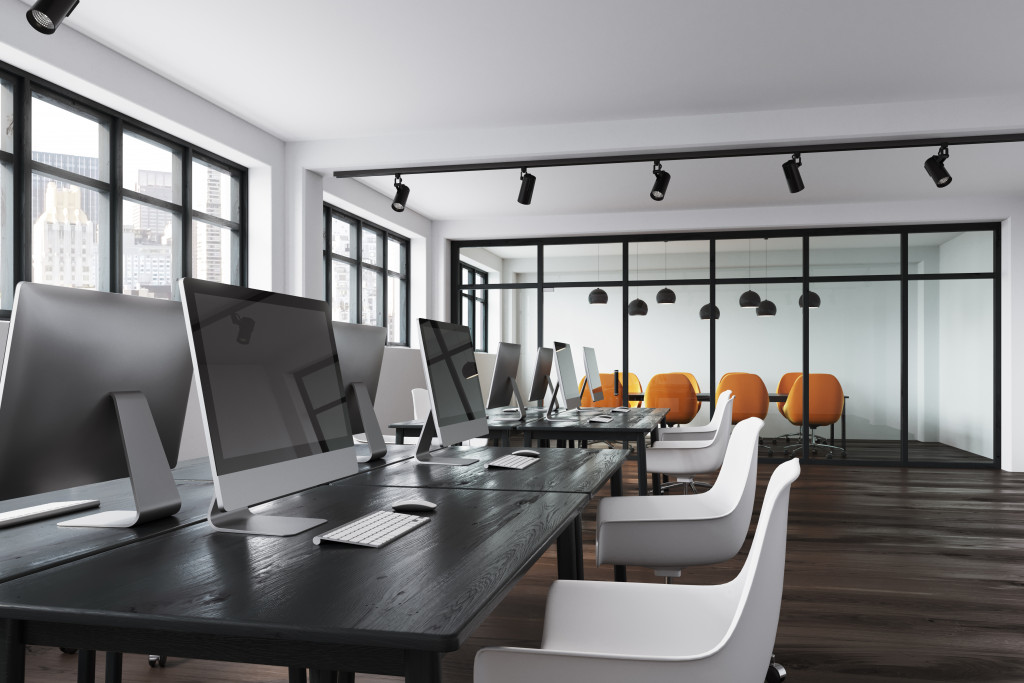A good office is essential to a productive workforce. Your workers’ surroundings greatly affect their general mental state and creativity. Learn how you can create a productive working environment for them.
Promote a Healthy Company Culture
Healthy company culture is integral to productivity and comes before the physical layout of your office in determining how productive your staff is.
Prioritize your employees’ health and motivation. Let your employees personalize their spaces a bit as it will help them form more of an emotional attachment to their work and help them stay motivated. Give them chances to move around as being physically active is key to a healthy mind.
Make Communication Easy
Use communication technologies. Give your workers online communication tools to connect to your other offices and make working remotely easier. A video screen or projector at the conference will make meetings and team collaborations easier and more productive.
However, be sure to not let your tools become distractions. A conference room full of screens or two monitors connected to one computer might seem cool and may even be necessary in some cases. But if you don’t need them, then they will just distract you. Only invest in what you need. What is important is that the space itself allows for easy communication.
Create an Efficient Layout
Don’t make your staff and clients go through a maze. Spend some time planning your office’s layout so that it’s easy to go through and well-organized. Install essential but noisy work tools like printers in areas where they can’t disturb meetings or your staff.
Designate a conference room that teams can request to use. Your staff needs individual workspaces as well as spaces for teams to collaborate. Workers are more productive when they are able to work with people with the same clients or goals.

Cubicles Vs. Open Offices
Should you use cubicles and give workers their own private spaces or should you have an open office where your workers can easily see and talk to each other? It depends.
The appeal of cubicles is easy to see. Everyone has their own space and can focus on their tasks. They aren’t distracted by a coworker moving around or get tempted to strike up a conversation which might also distract other nearby workers.
Open offices, on the other hand, allow for easier collaboration. They make it easier for workers to communicate and react to each other’s needs. Just not having cubicles also means that open offices have a lot more space.
However, open offices have their disadvantages. Workers are more prone to receiving stimuli, reducing productivity. They have less privacy, which some workers may need to be at the peak of their productivity and creativity. Less privacy can also be a problem for introverts that would prefer a more secluded workspace.
Making the decision to use cubicles or have an open office depends on the nature of your business. If your business has a large staff and values individual workers’ ability to perform tasks well, then using cubicles for a sectioned floor plan is the way to go. If your business has a small team, requires a lot of collaboration, and needs employees that aren’t introverted in the first place, then an open office will work better for you.
Pick the Right Furnishings and Lighting
A good office needs good furnishings. Aside from having a welcoming look, it’s important to consider ergonomics.
Your workers should keep their screens at about arm’s length. And the top part of their screens should be at eye level. Their forearms should be parallel to the floor when using a keyboard. Consider this when choosing desks for your workforce. Invest in adjustable chairs. It’s important that your staff has chairs that let them sit with good posture. That means both feet should be touching the floor.
You might want to have a few footstools for shorter staff members, so they can keep their chairs high enough for their desks. Conference rooms will need tables large enough to seat whole teams. And if noise is a frequent irritant at your office, soundproofing might be a necessary expense. If you need to, hire local movers to move and set up your furniture for you.
Use enough lighting. Poor lighting can cause eye strain and headaches, hindering productivity. This can also be caused by lights placed directly above computer monitors or poorly positioned desk lamps causing glare.
Let Nature In
If possible, allow for natural lighting. People need sunlight for Vitamin D, melatonin, and serotonin production, and it has positive impacts on mental health. Exposure to natural light also helps improve workers’ sleep quality and duration. All these together significantly contribute to your staff’s productivity.
Getting a few plants is quite beneficial as well. Having a bit of greenery in the office can break visual monotony, increase productivity and creativity, and reduce stress. Investing in low-maintenance plants is a simple way of improving your office’s atmosphere.
Follow these tips, and you will keep your staff working at their best. A healthy workforce is integral to a thriving business.

